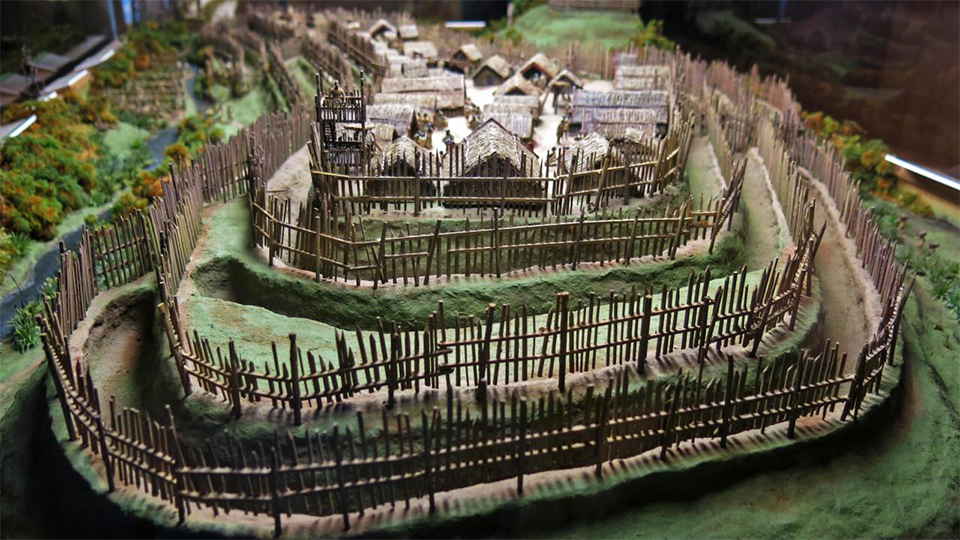
Pā were fortified villages. They were safe places to go in times of danger, but also had many other uses. Photo: Don Hitchcock, donsmaps.com. Source and text: Display, Tawhiti Museum. Artist and sculptor: Nigel Ogle.
What is a pā?
A pā is a fortified village or stronghold built by Māori. It was a safe place where people could go during war or danger, but it also had other important uses. Pā were places to live, store food, learn new skills, and practice crafts or gardening. Some pā were built for large whānau, while others were for bigger groups like hapū or iwi tribes. People didn’t live in pā all the time; they would often leave to fish, hunt, or take care of their gardens and return to the pā only when necessary, like during a threat of attack.
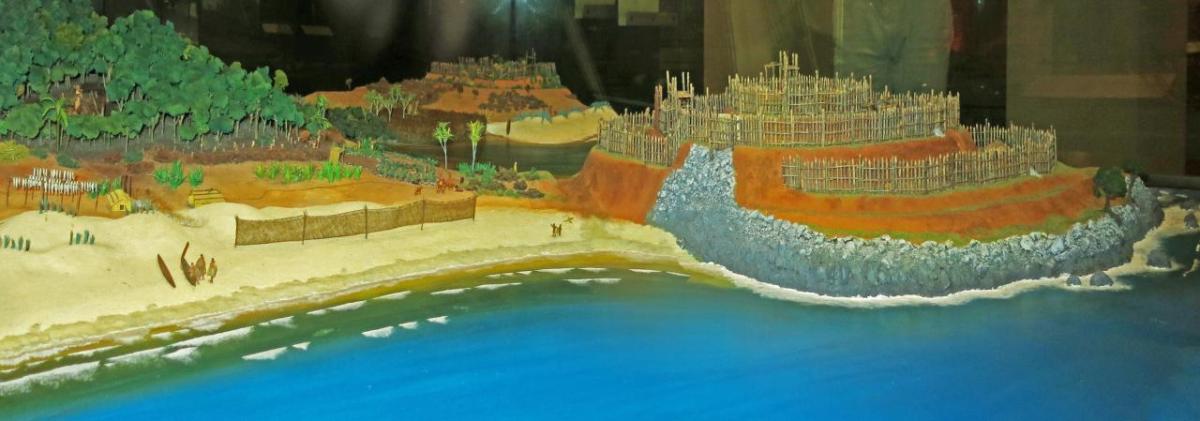
Pā are often found on high points, such as ridges, hills, or coastal headlands, which made them easier to defend. Photo: Don Hitchcock, donsmaps.com. Source: Display, Auckland Museum.
Where are pā found?
Pā were built in strategic locations to make them easier to defend. They were often found on high points, such as ridges, hills, or coastal headlands, which made it hard for enemies to attack. Some were built next to swamps or on flat land. Even today, you can sometimes spot the remains of pā in the landscape. Look for flat platforms, V-shaped ditches, or terraces (steps cut into hillsides) that were made to create level areas.
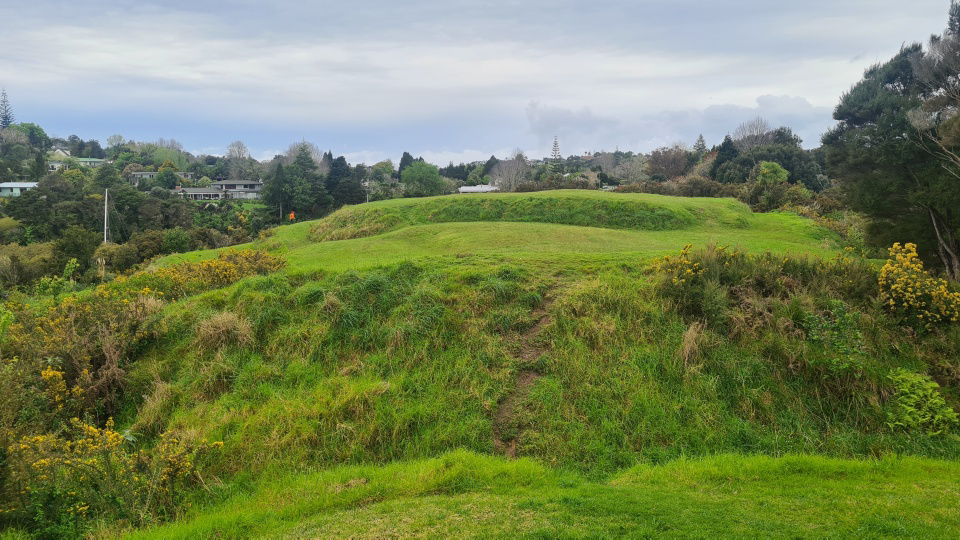
The remains of Kororipo Pā in Kerikeri, Bay of Islands. What can you see that shows this was a pā? Image: LEARNZ.
What is inside a pā?
The layout of a pā wasn’t the same everywhere – it depended on the land and its purpose. Most pā had a tihi, a flat area at the top, where important people lived. There were also terraces – flat spaces used for buildings and activities. You might see rectangular or circular holes in the ground, which were storage pits for kūmara. These pits were once about a metre deep and covered with pitched roofs to keep the food fresh.
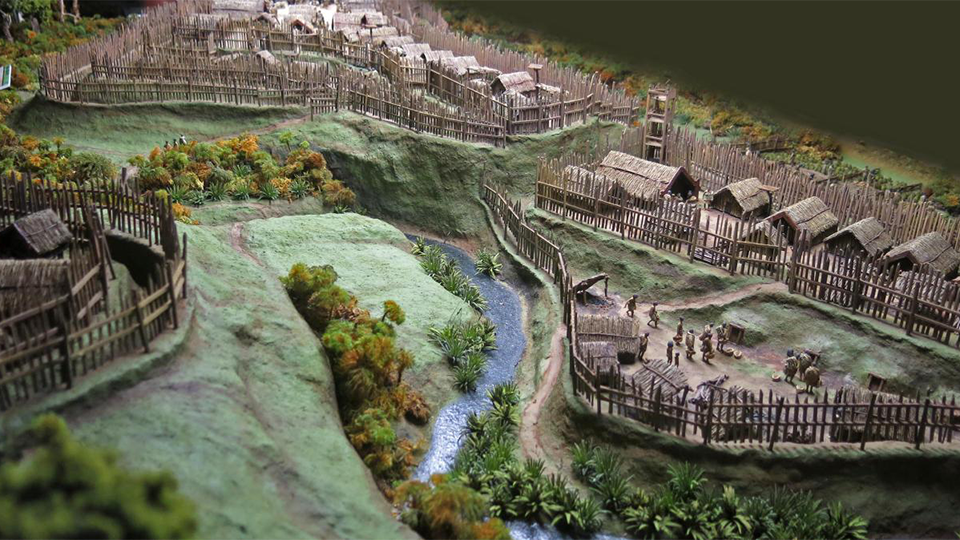
The layout of a pā depended on the shape of the land and the purpose of the pā. Photo: Don Hitchcock, donsmaps.com. Source and text: Display, Tawhiti Museum. Artist and sculptor: Nigel Ogle.
When were pā built?
The earliest pā in Aotearoa New Zealand were built in the 16th century. Māori continued building and using pā until the early 19th century. James Cook saw and wrote about pā during his visits to New Zealand in 1769–1770, and European missionaries and travellers described them in the early 1800s. After muskets were introduced, the design of pā changed to include new features for gunfighting, like loopholes for firing and angled defences.
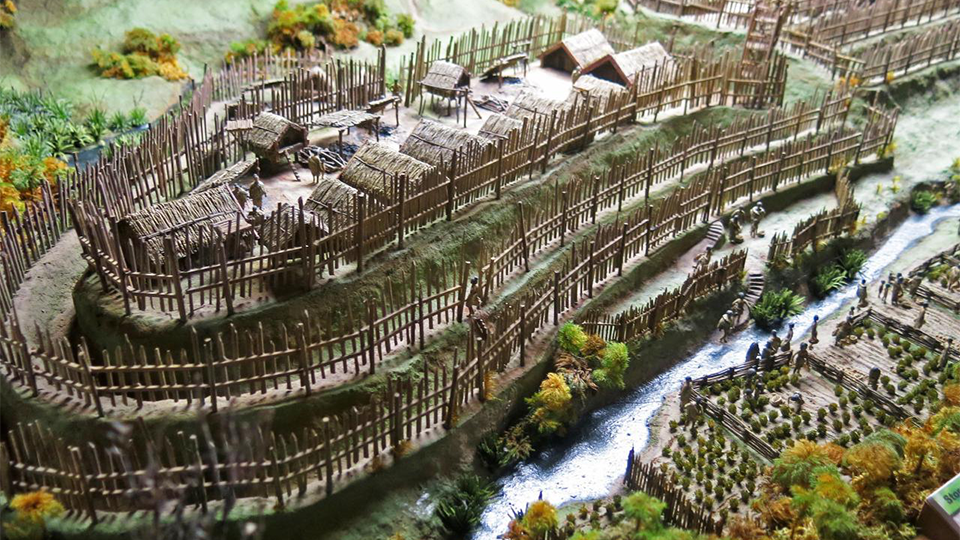
Māori continued building and using pā until the early 19th century. Photo: Don Hitchcock, donsmaps.com. Source and text: Display, Tawhiti Museum. Artist and sculptor: Nigel Ogle.
How were pā defended?
Māori used three main methods to defend pā:
- Steepening slopes: They made natural hillsides even steeper by cutting away earth.
- Earthworks: They dug deep ditches and used the soil to build high banks.
- Palisades: They built tall fences out of strong timber.
In some areas, like the Bay of Islands and Taranaki, stone was also used to strengthen defences, but this was less common. Pā were designed to protect against attackers, with narrow entrances that were easy to guard and ditches or earthworks to block easy approaches. Later, when gunfighting became common, pā had special features like loopholes for firing and angled walls for flanking fire.
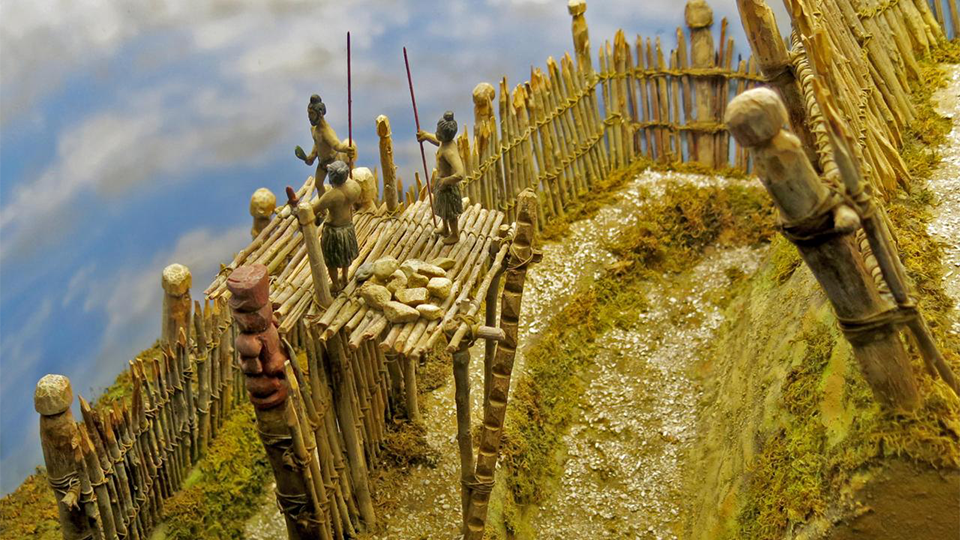
A variety of methods were used to defend pā. What methods can you see in this image? Photo: Don Hitchcock, donsmaps.com. Source and text: Display, Tawhiti Museum. Artist and sculptor: Nigel Ogle.
Pā were not just places of defence, they were central to Māori life. The remains of pā give us an incredible look into the past and show the ingenuity and resilience of the people who built them.
Māori kupu | key words
pā | fortified village or stronghold
tūāpapa | terrace
pātūtū | palisade
whānau | family
hapū | subtribe
iwi | tribe
kūmara | sweet potato
repo/reporepo | swamp
Source: Heritage New Zealand Pouhere Taonga | Archaeological remains of Pā [PDF]



